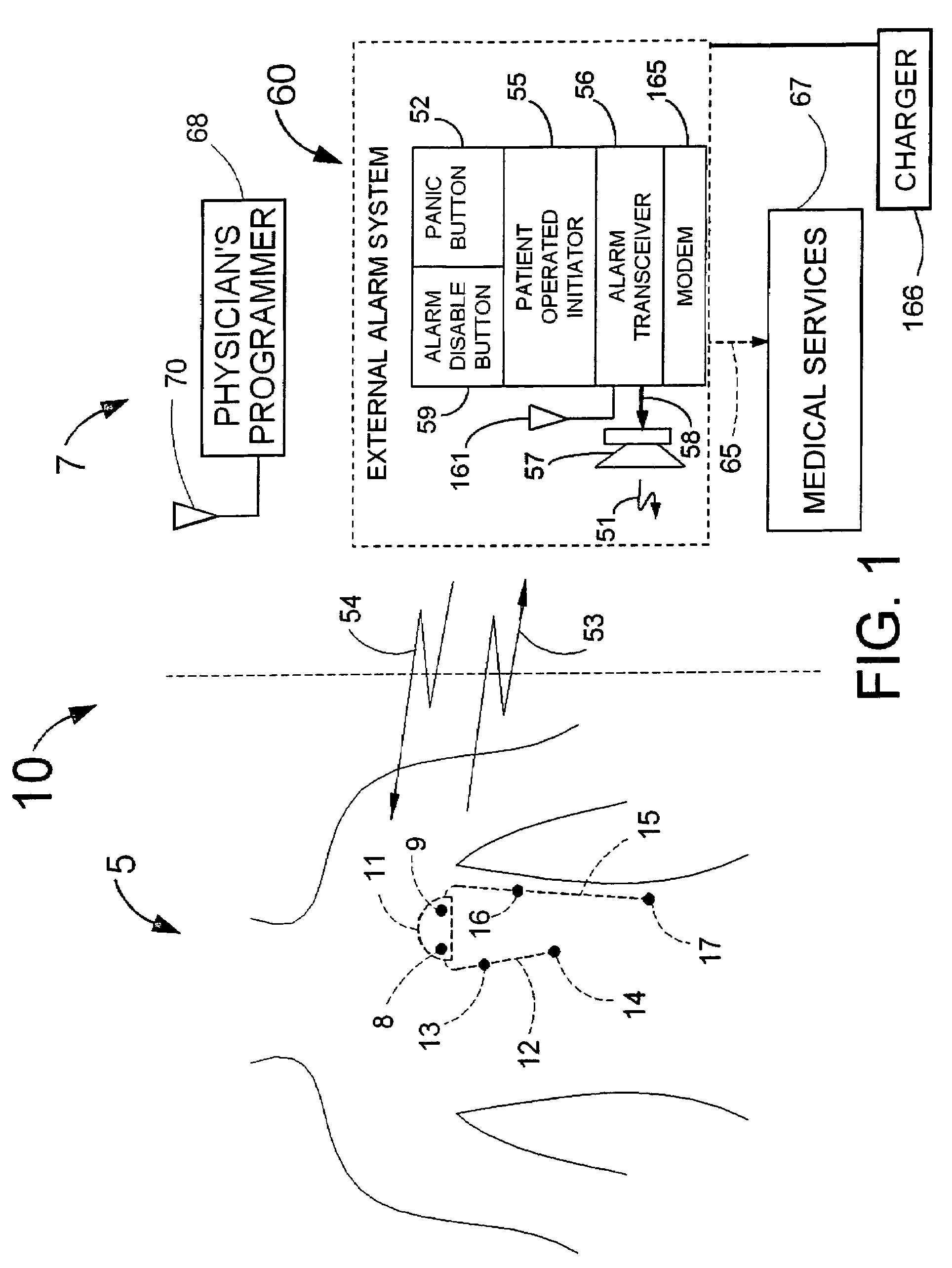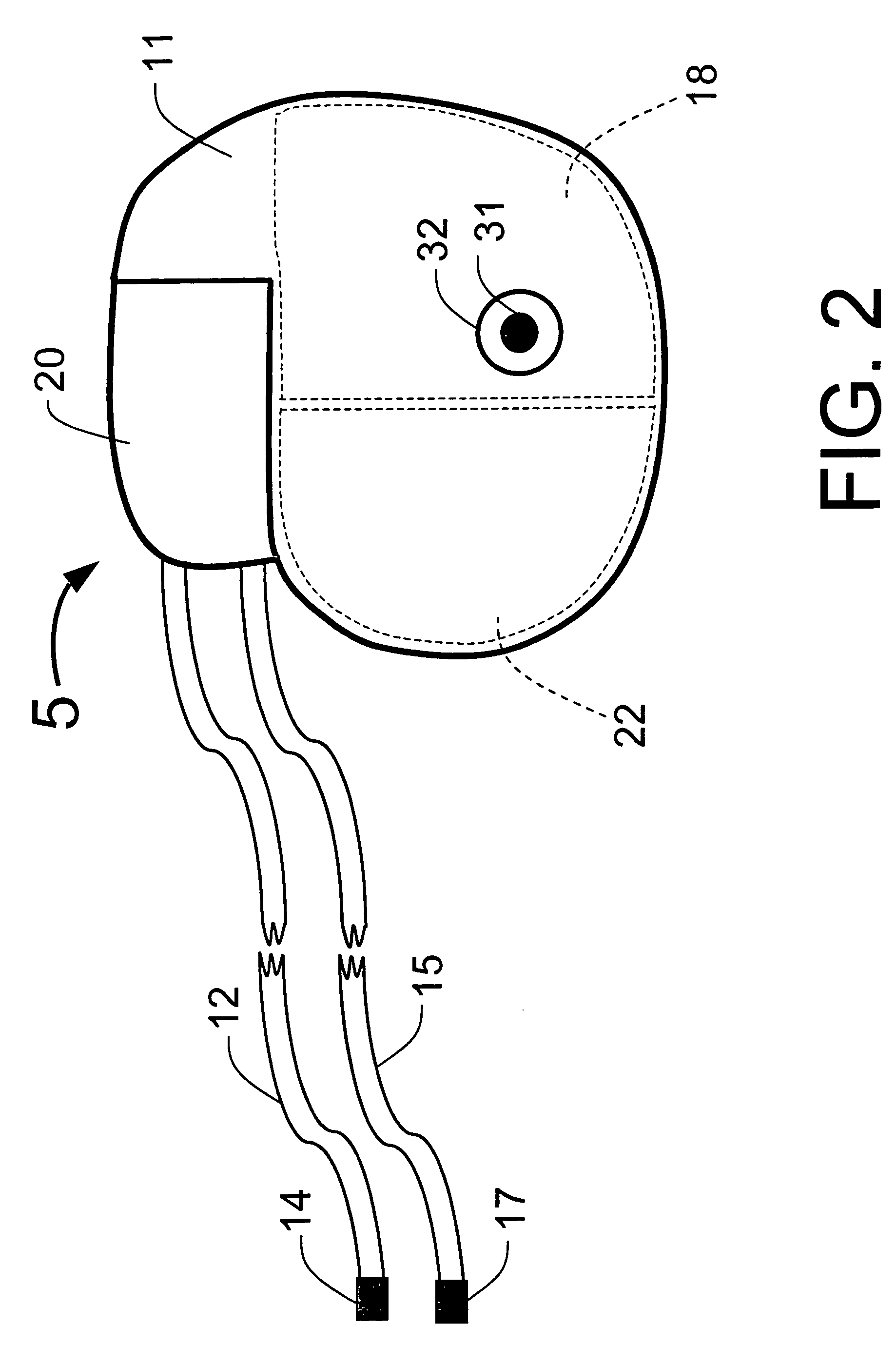Implantable system for monitoring the condition of the heart
a technology of implantable systems and heart muscle, which is applied in the field of implantable systems for monitoring the condition of the heart, can solve the problems of unreliable detection of standard 12 lead ecg, ami is a common and life-threatening complication, and the number of periodic biopsies of heart tissue as an indicator of transplant rejection can be greatly reduced, and the effect of restoring normal blood flow
- Summary
- Abstract
- Description
- Claims
- Application Information
AI Technical Summary
Benefits of technology
Problems solved by technology
Method used
Image
Examples
Embodiment Construction
[0110]FIG. 1 illustrates an example of a tracker system 10 including an implanted cardiotracker 5 and external equipment 7. The cardiotracker 5 includes electrical wire leads 12 and 15 and a battery-powered electronics module contained within a metal case 11. The cardiotracker 5 can track the patient's cardiovascular condition over extended periods of time. The cardiotracker 5 can also detect acute cardiac events including acute myocardial infarction and arrhythmias and warn the patient when such an event occurs. The cardiotracker 5 can also track slowly changing cardiac functions such as day-to-day changes in QRS voltage that can be indicative of the rejection of a transplanted heart. The cardiotracker 5 can record the patient's electrogram signal for later review by a medical practitioner. The cardiotracker 5 can capture histogram-based historical representations of one or more heart signal parameters for later analysis and review by a medical practitioner. The cardiotracker 5 can...
PUM
 Login to View More
Login to View More Abstract
Description
Claims
Application Information
 Login to View More
Login to View More - R&D
- Intellectual Property
- Life Sciences
- Materials
- Tech Scout
- Unparalleled Data Quality
- Higher Quality Content
- 60% Fewer Hallucinations
Browse by: Latest US Patents, China's latest patents, Technical Efficacy Thesaurus, Application Domain, Technology Topic, Popular Technical Reports.
© 2025 PatSnap. All rights reserved.Legal|Privacy policy|Modern Slavery Act Transparency Statement|Sitemap|About US| Contact US: help@patsnap.com



